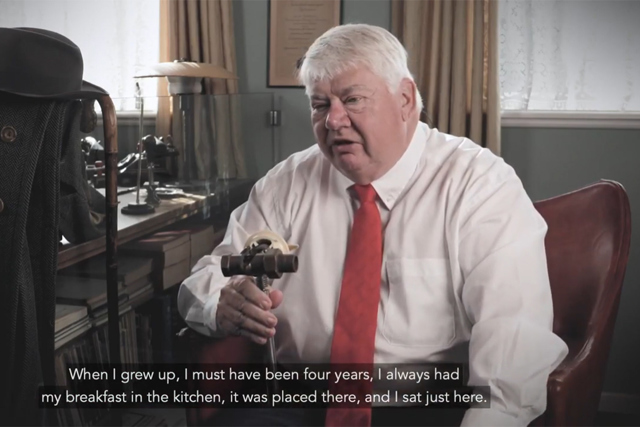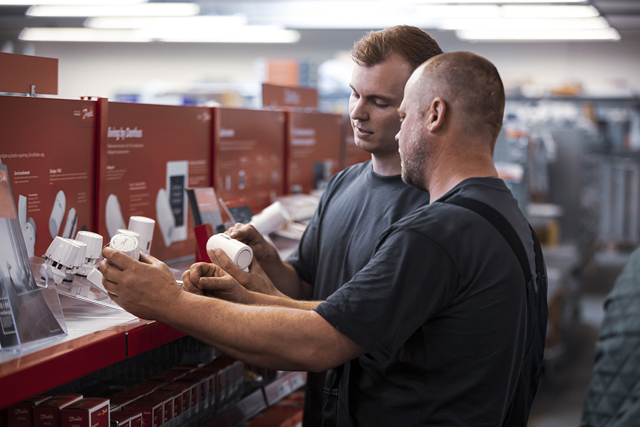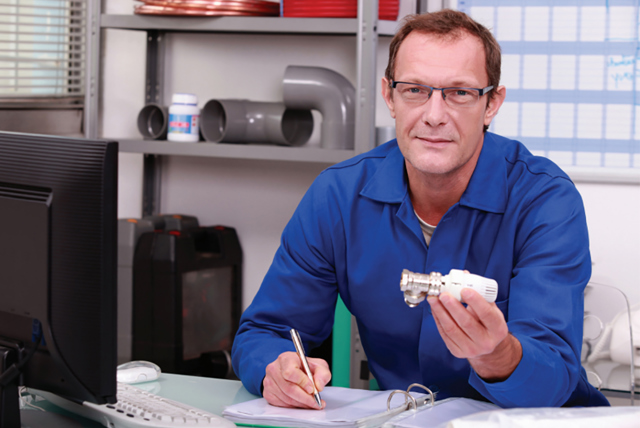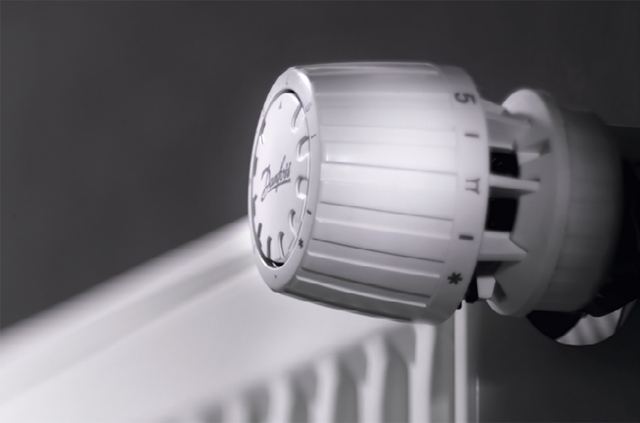Almost a century old, a simple yet brilliant technology is still going strong.
Do you know the important role radiator thermostats play in the green renovation of Europe’s buildings? Vast amounts of energy is wasted every year because we heat buildings inefficiently. We can do better. Learn about the inner workings of the thermostatic radiator valve, and how you can help customers upgrade their radiator control.
Magic or just great engineering? A self-acting mechanism operating with no external supply of energy.
How do you create an endless ability to open and close a valve with no outside supply of energy? You put together a great team of engineers with the will to solve the impossible. The result is remarkable. A product with a small, simple and yet brilliant way of radiator control.
How? It’s about a delicate mixture of gases and tapping into nature’s own rhythms or expansion and contraction when temperatures change. At the heart of the thermostat is a bellow. This bellow holds a special substance that expands and contracts, affecting the spring inside the thermostat which will then open and close the valve. When the room temperature increases, the gas inside the bellow expands causing the valve to close by reducing the flow of hot water through the radiator. When the temperature drops below the pre-set room temperature, the gas bellow automatically contracts and opens the valve to increase the flow of hot water until the desired set temperature is reached.
On the contrary, we have the 500 mio. manual valves in Europe that operate with a full open-full close handle mechanism with no temperature sensing regulation at all, resulting in a massive waste of energy.
See the simple workings of the mechanical radiator thermostat in the video below:
Do you know the difference on gas, liquid , wax-filled and electronic thermostats?
Thermostatic radiator valves are not all the same, they operate with different types of mediums inside the bellow. It matters what kind of medium that controls this opening and closing of the valve. It can be wax, liquid, gas or electronic properties that controls this mechanism, and the difference on reaction time is huge spanning from 1-40 min!
Danfoss gas-filled RA2000™ thermostat - the secret is in the mixture of the gas.
Gas is the fastest medium we have got for the mechanical range. 10 min. is all it takes for the gas mixture in our Danfoss RA2000™ to react on temperature change. The mixture is delicate and optimized throughout the last 75 years. In fact, every single Danfoss radiator thermostat is unique and contains a different mixture of gases. The customized gas-filling compensates for even the tiniest variations in other parts of the thermostat. In this way, every thermostat offers the same unrelenting precision in automatic temperature regulation. Even though this small product might not look like much on the radiators you pass every day, it’s a notable piece of simplistic engineering.
Reaction time – the vital feature in radiator thermostats few people know of.
Does the word “reaction time” ring a bell with you? If not, you are not alone. Most heating professionals are not aware that this small piece of information says a lot about the performance of a radiator thermostat. Reaction time means the time that it takes before the thermostats detects a change in temperature, and then starts to compensate for it by opening or closing the valve to either lower or increase the temperature in the room, so it reaches the desired set temperature. It’s not the time it takes for the thermostat to restore the set temperature in the room, but the time is takes before it detects the change and begins the process of compensating for it.
Evolution from 40 min to 1 min reaction time
The old-school radiator thermostats use wax inside the thermostat to expand and contract the bellow. Wax-filled thermostats take 40 min to detect a change and first then, they can start compensating for the temperature imbalance. That means it takes a long time before the comfort temperature is restored in the room. Not so pleasant.
The next generation of radiator thermostats use either liquid or gas to control the expansion and contraction inside the thermostat. Gas-filled thermostats are the fastest in the world in the category of mechanical radiator thermostat with an impressive 10 min reaction time. This is due to the special mix of temperature-sensitive gasses that can detect changes a lot faster than liquid.
However, it cannot beat the remarkable 1 min. reaction from the latest generation of electronic thermostats.
From mechanical to 21st century electronic radiator control
Electronic thermostats open up a new dimension for smart radiator control. Besides the 1 min reaction time, it can connect to home automation systems like Alexa and it comes with an App for remote control. You can also program schedules, so the heating adjusts atomically to the rhythm of the household, for example by lowering the temperature when you are at work or sleeping.
Optimizing the heat to follow the rhythm of the household provides the exciting opportunity for up to 30% energy savings. It’s an easy CO2-reduction potential just waiting to be tapped by homeowners all around the world. Furthermore, electronic radiator thermostats offer auto-balancing properties, programming, open-window detection and much more cool integration with homes.
However, many heating professionals do not feel 100% comfortable selling this type of product yet, because of all the questions on use and technology homeowners may have. Don’t worry, we know you are not an IT specialist! We have tried to make it easier for you to recommend this product for households wanting to enter the 21st century and take full opportunity of the new digital options for smart heating.
The classic mechanical radiator thermostats can outlive most things in your house.
Electronic thermostats are exciting, but they can’t par with the lifetime operation of the classic mechanical thermostats that are able to outlive most other components in your house. The self-acting mechanism via the gas in the bellow, does not require any power source unlike the electronic thermostats that are battery driven and lasting about 2 years under normal use conditions. That is the beauty of the technology behind the mechanic thermostatic radiator valve, even though it does not talk with voice controls like Amazon Alexa and communicate and calibrate with other devices in your home.
Fast installation and long service life
The Danfoss RA2000™ can be installed within seconds without tools thanks to the unique ‘click’ connection. It works right away with no additional calibration or adjustment needed.
Furthermore, the robust and simple construction guarantees a service life of 30 years or more without maintenance, and it comes with 5 years manufacturer’s warranty and even 10 years warranty if you combine with a Danfoss valve.




